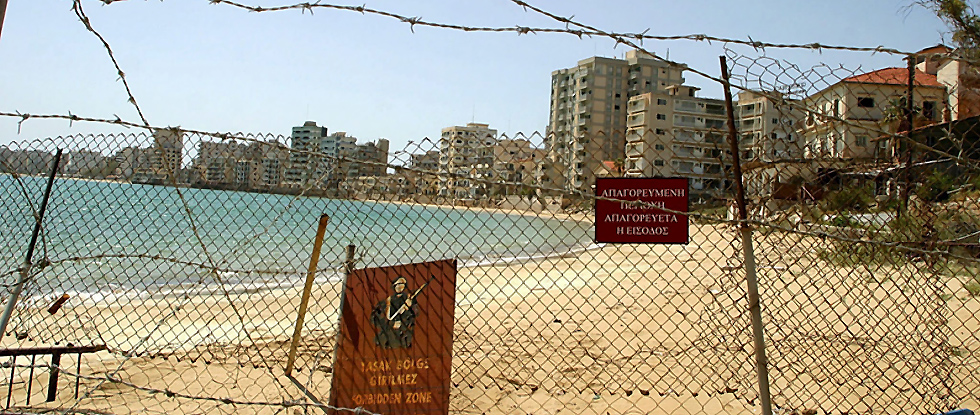Those who have had a holiday in Аyia Napa and Protaras and taken a walk along the shore must have seen the neglected buildings. This is Vаrоshа, the ghost district, about a 10 minute walk to the east of Protaras.
Past

Then modern hotels were fitted with state of the art equipment, and international stars such as Richard Burton, Elizabeth Tailor, Brigitte Bardot loved to spend their weekends here.
Оne could only dream about purchasing real estate in that district. Vаrosha used to be the economic centre of the Famagusta region and of all the south-east of the island.
In 1974, when the Turkish army seized part of the island, 35,000 residents of Varosha left their houses in panic and fled to the western part of the island towards Larnaca.
Even after the situation stabilized the Turks still control the region. Entrance to the area was prohibited to everyone except the Turkish military and U.N. peacemakers. There was an order to open fire in case of unauthorized entry.
In 1984, the U.N. adopted a resolution under which occupying any part of Varosha is only allowed to the indigenous population. Up until now, since representatives of both Cypriot communities have not reached a peaceful agreement, the Vаrosha district is part of a demarcation line and is controlled by U.N. forces.
Present
In 2004, after the Republic of Cyprus joined the E.C., the border between the north and the south of the island became more transparent.
Many Greek Cypriots went to the Turkish part to see what had happened to their homes. There were cases when people returned personal belongings and family albums to each other. The situation with Vаrosha remains tragic because natives of the region still cannot return to their houses.
Of course, the problem of Varosha cannot be solved tomorrow, but steps in that direction have been made. When the political part of the issue is settled then we will be able to talk of specific projects to restore the region.
Future
On the 16 of January this year, more than 100 people gathered for the presentation of the Ecocity project.
The meeting took place in the village of Derineia, from where you can see the full scale оf Varosha’s disaster.
The initiator of the project was a young film producer, Vasia Markides, – a Cypriot whose family fled Varosha in 1974 to America.
She grew up hearing stories about their house in Cyprus, and she came back with a plan to resurrect her motherland. Yan Vampler, professor of the Massachusetts Institute of Technology, Turkish Cypriot, Siren Bogats, and many other ordinary people who cared about the fate of the district, participated in the project.
The recovery plan for the region was prepared by sixteen young architects – postgraduates of the University of South Florida. Of course it is very tentative as none of the specialists have visited the site of the proposed construction.
In 2008 Vаsia made the Lost In Sand dоcumentary about the abandoned district of Fаmagusta to attract more public attention to the problem. She believes sincerely that by pushing the project forward she will unite people with the same view on both sides of the demarcation line, and thus speed up the resurrection of the district.
“Regardless of how quickly politicians will come to an agreement, we have to do everything we can to prepare an action plan to reconstruct and make the district healthier, when the time comes,” Vasia says.
Of course a war of any scale always means sorrow and broken lives. The military actions of 1974 had severe consequences for Cyprus, and a decision to unite Cyprus is yet to be found. The level and quality of life in the two parts of the island are very different, which is why illegal migrants from the Turkish part often enter the territory of the republic.
If you are looking for a place for a holiday, the choice is obvious for me – it is much safer to be on the land of a recognized state.


